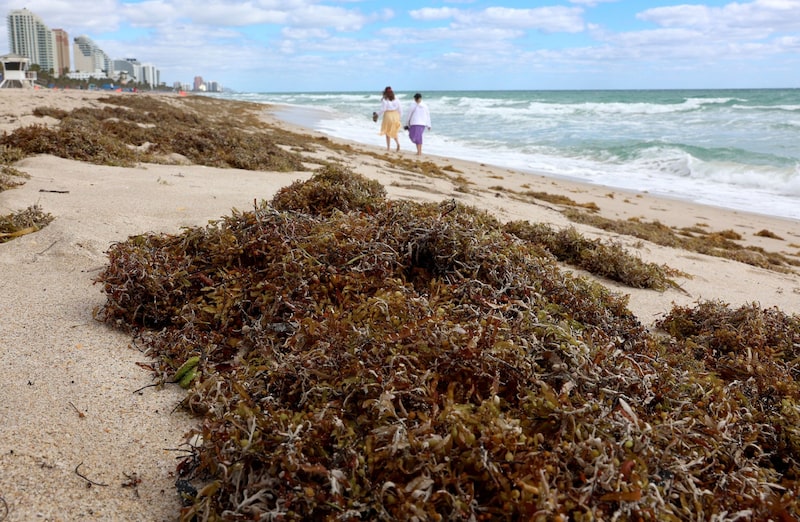Bloomberg Línea — A gigantic mass of sargassum seaweed has formed in the Atlantic Ocean and is beginning to settle on the coasts of Florida and other areas of the Gulf of Mexico, a common occurrence in tropical and subtropical waters of the North Atlantic and the Caribbean Sea.
The brown seaweed floats freely on the surface of the ocean, forming large patches of floating vegetation known as a ‘sargasso sea’.
While the algae are important because they provide a critical habitat for a wide variety of marine organisms such as sea turtles, fish, crabs and birds, in recent years, it has caused problems for tourism and local industries, and also for the environment because of their increasingly large size.
According to the University of Florida, the current bloom is the largest, with an extension of more than 8,000 kilometers from the coast of Africa to the Gulf of Mexico.
Biologists and scientists indicate that the bloom will continue to increase in size and could peak in June or July.
Its movement depends solely on wind, waves and tides, according to the National Oceanic and Atmospheric Administration (NOAA), .and will not only impact beaches, but also fish strandings that university researchers say are “inevitable” along the east coast of Florida, the ocean side of the Florida Keys and around the Caribbean.
Sargassum, or sargasso, can give off an unpleasant odor as it decomposes, which can affect air quality in coastal areas and can release nutrients that contribute to excessive algae growth in the water, and which can lead to eutrophication problems and negatively affect water quality and marine life in general.
“Hotel owners have seen drops in occupancy rates during stranding events, and fishers are struggling with both the effect of seaweed on local fish populations and their equipment,” explained Lara Williams, a climate change columnist at Bloomberg.
Can this pest be beneficial?
According to Williams, there is a lot of interest in seaweed farming as a method of carbon dioxide removal, which is why UK-based seaweed start-up Seafields is interested in sargassum: although research shows that its carbon uptake is not as high as other seaweed species, it grows quickly and does not need a surface area to grow on.
Seafields’ ultimate ambition is to eliminate up to 1 gigatonnes of carbon dioxide a year (40 gigatonnes were emitted globally in 2022), with 94,000 square kilometers of modular farms. The idea is to cultivate sargassum and extract useful materials to create products such as bioplastics and biofuels, or compress the algae into bales that will sink to the bottom of the ocean, storing the CO2 captured by the plants.
One challenge, along with raising initial funds, is that the carbon credit market as it exists today is too cheap and not reliable enough, however.
“It’s unfeasible to think you can permanently remove a ton of CO2 for $5, it should be closer to the IMF’s $75 per ton target,” according to John Auckland, co-founder and CEO of Seafields.
“The Intergovernmental Panel on Climate Change has recognized that carbon dioxide removal will play an important role in mitigating the climate crisis. Therefore, we will need to harness our human power to influence the planet to begin to reverse the damage we have caused. Projects like Seafields can be part of that. We just need to make sure we take the time to invest in them responsibly,” Williams said.


